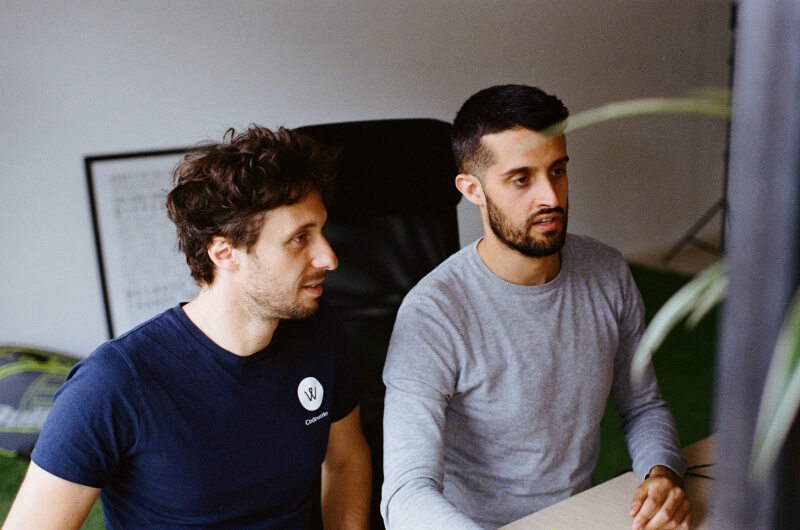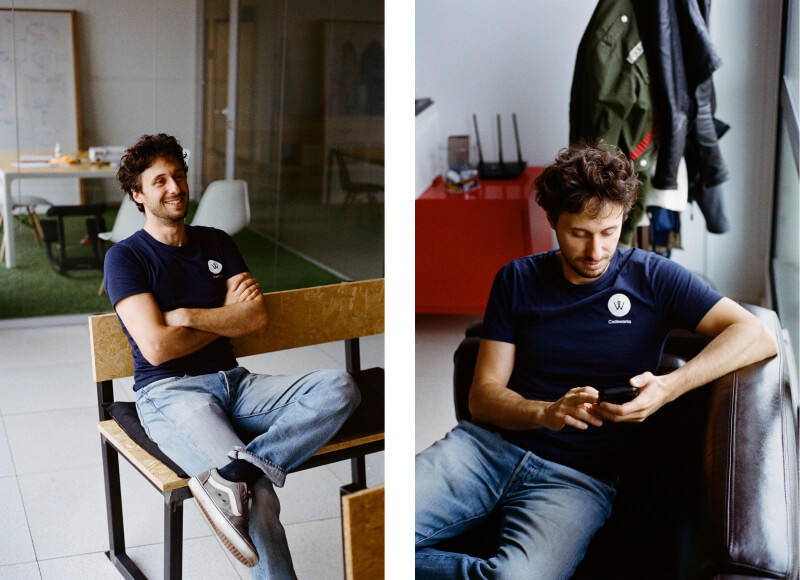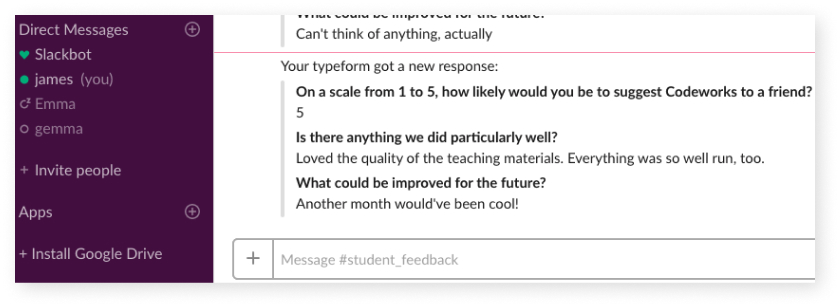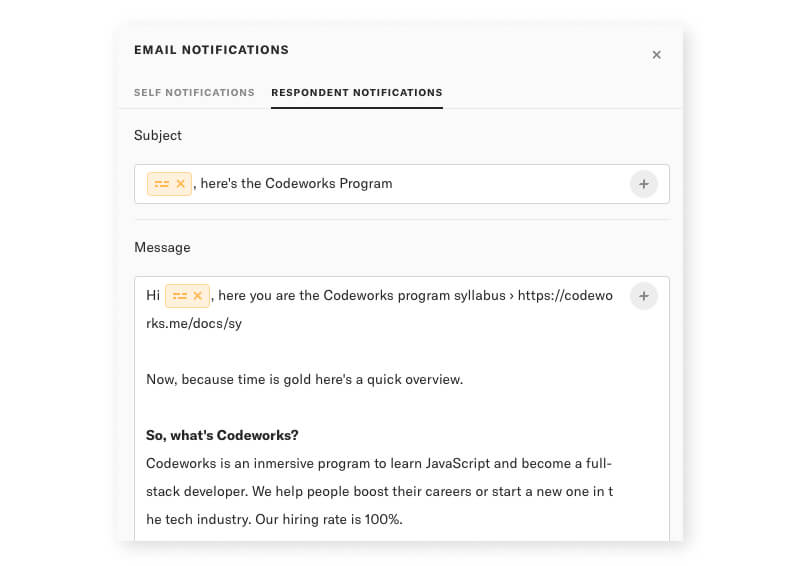Customer
The tools that help the Harvard of coding schools
You don’t become the best with mediocre vision and feedback loops. Here’s how Codeworks sets themselves above the rest.<br>

In a nutshell
Watch the video for an overview, get the full story below.
Coding bootcamps have come a long way. While the phrase might conjure images of Full Metal Jacket with laptops, they’ve become a crucial step between regular college and the world of tech. But just like with every school, choosing the right one is a tough decision.
Codeworks aims to make that decision easier—by making its course more challenging and more rewarding. Its students work eleven hours a day, six days a week, for three months. And saying goodbye to Friday nights clearly isn’t for everyone.
But for those who take on the challenge, the rewards are worth it. Every single Codeworks graduate has found a job within six months, with starting salaries 26 percent higher than the industry average. Sound similar to another famous school?
But while Harvard has been around for hundreds of years and has 16,000 staff members, Codeworks has only been going for two with a team of 10 people. And building an Ivy League reputation isn’t easy.
Here’s how the right tools help Codeworks’ small team build the best coding school in Europe.
Pooling talent
Schools of excellence are normally established brands. They’re swamped with applications all the time.
But like most modern companies, Codeworks has to be proactive to find the right audience.
How do you attract interest while showing people how deep the course will go? Let them download the curriculum, in all its detail and intensity.
Here’s how Codeworks finds a pool of talent:
- Step 1: They promote Facebook and Instagram posts asking a simple question: “Do you want to learn JavaScript?”
- Step 2: People interested fill in a simple typeform, where they leave their email in exchange for a download link for Codeworks’ curriculum.
- Step 3: Codeworks follow up by email to find out if there’s a mutual fit between the course and the candidate.
The best part? It all happens automatically.
Codeworks has connected Typeform to Zendesk Sell via Zapier, so all their leads are properly sorted and receive the right emails.
With this campaign method, the team has added a big splash of talent to its pool of potential students.
But while pooling talent is a big first step, the really important part comes next: fishing for the best and brightest.
A year’s worth of qualified signups
At some point, you may have thought: “I want to learn how to code!” Maybe you just saw a documentary about hacktivism, or Indie Game: The Movie. But after a few seconds staring at HTML, that desire becomes a distant memory.
Codeworks has to find people who really want to learn. And that’s a challenge:
To figure out if someone’s right for the course, the team interviews the most promising candidates face-to-face. But their small team can’t interview everyone who applies.
So their signup form is key. Here’s how they do it:
The form asks for contact info, when the candidate wants to start, and more importantly, why—what’s the person’s motivation for learning. It also asks about their coding experience, to make sure candidates have the basics nailed.
And because it’s such a crucial first step in the Codeworks journey, they put a lot of care into the design.
Has it paid off? Last year, they got 2,000 signups—way more than enough to fill their classes for the whole year.
One last key trick: connecting the signup typeform to Google Tag Manager. Simply put, it lets the team see whether signups come from Google Ads, review sites, or somewhere else, so they know where to focus their efforts.
And this brings us to the other end of the Codeworks journey—getting past graduates back in the loop.
A virtuous loop
Codeworks demands a lot of effort from their students. In return, they constantly aim to make the course even better.
So they collect feedback from graduates as they’re finishing the course. Happy past students are one of their strongest referral sources for new students, so it’s vital to know how they feel.
Here’s their course feedback typeform:
It’s only three questions, and totally anonymous—which helps them get an honest picture of the course from a student’s perspective.
The typeform’s also hooked up to Slack, so they never miss a bit of feedback. Then the team gets together to figure out what they can do to improve student experience. “I always say that our best course is going to be the next course,” says Alessandro.
Codeworks may only be ten people. But with the right tools—and a heap of typeforms—they create a course experience that aims for excellence from first day to graduation.
Here’s a crash course on the features behind the forms.
Here’s a few things Codeworks did to make their typeforms work for them.
1. Remove Typeform branding
A new students’ first experience with Codeworks is through a typeform, so they design the forms to feel like their forms. Find out how to get rid of Typeform branding here.
2. Slack integration
Codeworks connects their feedback typeform to Slack, so they receive comments as soon as they’re sent. Learn how to do the same here.
3. Respondent notifications
Once someone leaves their email in Codeworks’ lead generation typeform, they’re automatically sent a copy of their curriculum. Here’s how to set up your own automatic notifications.
4. Google Tag Manager integration
Codeworks connect their signup form to Google Tag Manager to help pin down their best performing promotion channels. Do this yourself with this guide.
What’s next?
Looking to grow your audience pool with qualified leads? Could you use some feedback to improve your business or organization?
- Get started right away with a template for lead generation or customer feedback.
- Check out Typeform Connect for how to integrate with the tools you’re already using.
- Sign in to your Typeform account to explore more ways to interact with your audience now:










